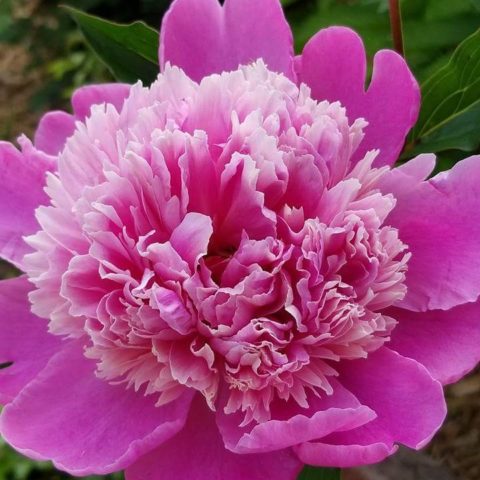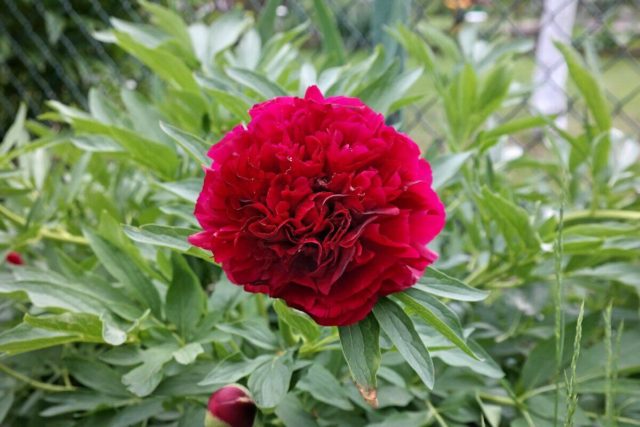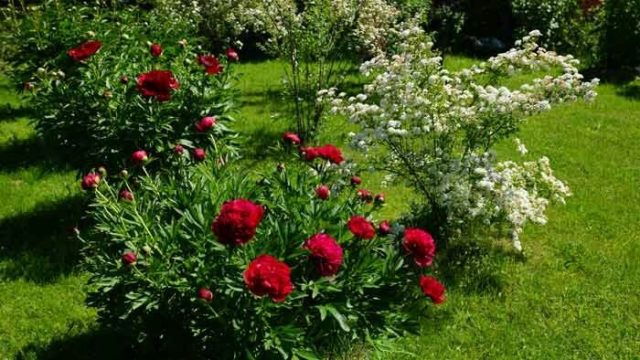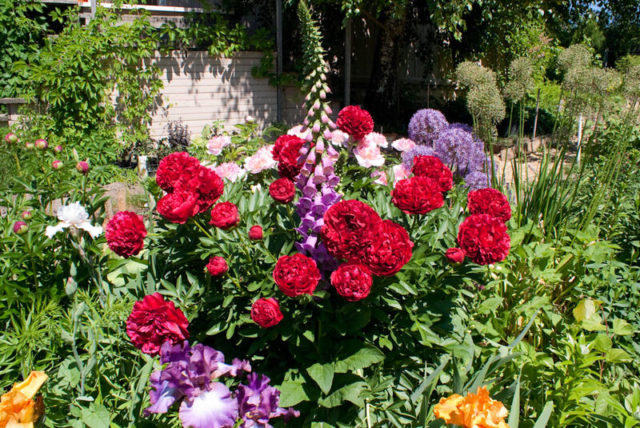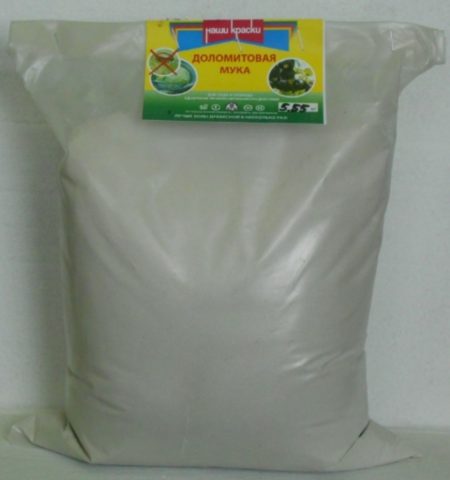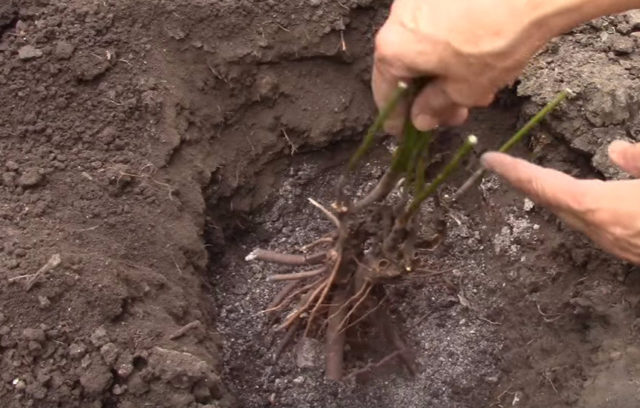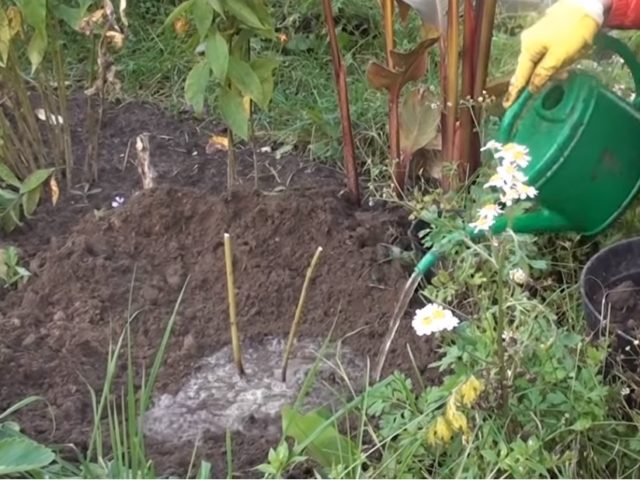Content
Peonies at all times were in demand among flower growers, which is why many varieties and hybrids have been created. Plants with bomb-shaped inflorescences are especially popular. The herbaceous peony Red Grace is a perennial of American selection that appeared in Russian gardens in the 90s of the last century.
Despite its youth, there are already many awards on the account of the variety:
- six years after its creation - the gold medal of the "American Peony Exhibition";
- from 1991 to 2003 - four times won at the Moscow florist exhibition.

Several centuries ago, peonies grew only in the gardens of rich people, since seedlings were expensive
Description of peony Red Grace
Peony Red Grace is an interspecific hybrid. To create it, two types of culture were used:
- peony Lactiflora;
- peony Officinalis.
The bushes are tall, the stems grow up to 120 cm. The variety is distinguished by dense erect shoots. The peony is spreading, quickly growing green mass. In strong winds, the stems can break, therefore, experienced flower growers recommend making supports up to 70 cm high around the bush. The foliage is dark green, delicate, since the plates are heavily dissected.
Like all peonies, the Red Grace interspecific hybrid is a sun-loving plant. In the shade, the buds lose their decorative effect, decrease in size.

The culture is frost-resistant, so it can be grown in all regions of Russia
Flowering features
Herbaceous peony Red Grace - large-flowered, double. Flowers in diameter - about 18 cm with rounded smooth velvety petals. They are also called bomb-shaped.
Crimson or cherry petals are so firm that they appear waxy from a distance. They are all the same size no matter where they are. When the buds open, the edges of the petals are slightly curled at the top, then completely straightened. And the flower becomes like a huge red or cherry ball.
Flowering begins 2-3 years after planting the bush. This stage in the life of the Red Grace peony lasts about 21 days annually. Flowers form at the tops of the stems one at a time, there are no lateral buds. The petals are so densely packed that the core is not visible.
The Red Grace peony is also interesting in that stamens and pistils are rarely formed, which means that it does not form seeds. If we talk about the aroma, then it is not strong: a mixture of caramel, chocolate and cinnamon.
The hybrid is an early flowering plant. Already in May or early June (depending on the region of cultivation), you can admire the beautiful buds that look great against the background of carved greenery. In order for the flowering to be abundant and lush, you need to follow the rules of agricultural technology.
Application in design
Red Grace peony is appreciated for its decorative effect, and attracts not only dark red or cherry buds, but also carved openwork greenery. Foliage, with proper care, does not lose its color until frost.
This property of the hybrid attracts landscape designers and gardeners. That is why flowers are grown not only in private plots, but also in parks. The Red Grace peony looks great as a solitaire or in combination with other flowers.
Terms of use in design:
- On a grassy lawn, bushes are planted in the center so that lush buds are visible from all sides.
- Many gardeners grow Red Grace as a hedge along fences or buildings.You just need to take into account that the bushes are located at a distance of 1.5 m so that the peonies have enough space for development.
- It looks no less gorgeous in group plantings, if you choose the right neighbors. Next to foxgloves, stonecrops, phloxes, irises, chic buds look advantageous. Delphiniums and vatniks are suitable as neighbors.
The main thing is that the growing flowers are not taller than peonies.
- Alpine slides, mixborders, garden zoning are great hybrid uses.
- If there are gazebos on the site, the peony will be a great addition. You can plant Red Grace near the porch.
Luxurious spherical buds stand for a long time in the cut, the petals do not crumble
Herbaceous peonies Red Grace, like other species and varieties of crops, can be grown in flowerpots on loggias and balconies. You just have to create special conditions.
Reproduction methods
As already noted, it is almost impossible to fertilize the Red Grace peony, therefore seed reproduction is not suitable. To obtain planting material, you can use:
- cuttings;
- dividing the bush.
It is most successful to plant a peony in cuttings, using bushes older than five years for this. This will allow not only to get several new plants on the site, but also to rejuvenate the culture.
Landing rules
Peony Red Grace (translated as "the grace of red") can be planted in spring and autumn. Experienced gardeners recommend doing this at the end of August (September), depending on the region. Planting in autumn will give the plant the opportunity to root when there is no heat.
Seat selection
Since the Red Grace peony is sun-loving, a well-lit place without drafts is chosen for planting. An area with an openwork shadow is also suitable, but the sun should give off its light for at least 8 hours a day.
The culture does not tolerate stagnant moisture, therefore, groundwater should be located no higher than 2 m. Otherwise, the root system will begin to rot, which will lead the bush to death.
Planting pit preparation
A hole is dug 30 days before planting. Its size should be large, because the Red Grace peony will grow in one place for several decades. Since the bushes are spreading, the holes need to be dug at a distance of 1.5 m if several peonies are supposed to be planted.
Stages of work:
- The dimensions of the seat, as for other varieties, are not less than 70x70x70 cm.
- The bottom of the pit, regardless of the height of the groundwater, is filled with a drainage layer of about 15-20 cm so that excess water can successfully seep out.
All components for planting peonies are prepared in advance.
- The soil removed from the top is mixed with humus, peat, sand, superphosphate is added and laid in a pit.
- Then the nutrient soil is poured without fertilization. It should be borne in mind that peonies grow well on loose, slightly acidic soils. Reduce acidity with wood ash or dolomite flour.
Preparation of seedlings
Special preparation of seedlings is not required. It is only necessary to select healthy specimens with clean, without rot and blackness of rhizomes. In order for rooting to be successful, it is recommended to soak the planting material for a day in water or a solution of any rooting agent.
Peony planting algorithm
Correct planting is very important for peonies. If mistakes are made, then the next year you will have to transfer the bush, and the culture does not like this.
Landing rules:
- In the hole, raise the soil in the center to make a mound.
- Put the cut with a slight slope, and sprinkle the roots to a depth of no more than 3-4 cm.
- Tamp the ground a little.
You need to work carefully so as not to break fragile kidneys.
- Make a groove around the plant for watering.
It will take about two buckets of water per bush to get the moisture as deep as possible.
- Mulch the soil with peat, compost or humus.When green grass appears, chop it and sprinkle it under the bush. This is both mulch and fertilizer at the same time.
Follow-up care
Peonies are very demanding on moisture, so you need to water them abundantly. For mature bushes - up to four buckets. Enough once a week. In rainy weather, irrigation is stopped, in drought it is carried out as the top layer of the soil dries up.
The first two years the Red Grace peony is not fed, in the future the procedure is needed three times:
- in early spring, when the buds awaken, fertilizers containing nitrogen are applied;
- in May and June, when buds form, peonies need potassium and phosphorus;
- autumn dressing is also carried out with potash and phosphorus fertilizers.
Preparing for winter
In autumn, after feeding, herbaceous peonies are cut off. Young bushes are sure to spud. Adult plants do not need special shelter. In regions with little snow, it is enough to mulch with humus or compost. The layer is about 20-25 cm.
Pests and diseases
A typical disease of peonies, including Red Grace, is gray rot. The problem is most often associated with warm rainy summers and the presence of pests such as ants and aphids. When damaged by rot, the stems begin to fade, and then the buds.
To avoid the disease, you must first deal with pests, and then treat the plantings with special fungicides.
Conclusion
Peony Red Grace is an ornamental plant that will decorate any garden area. Growing it is no more difficult than other flowers. Indeed, judging by the description, the variety is unpretentious.
